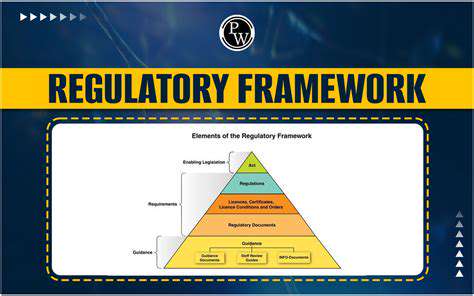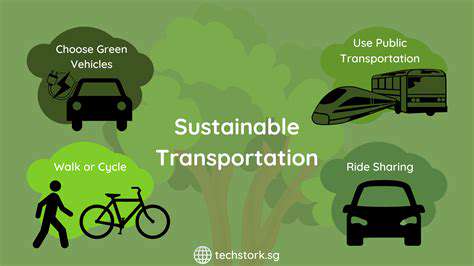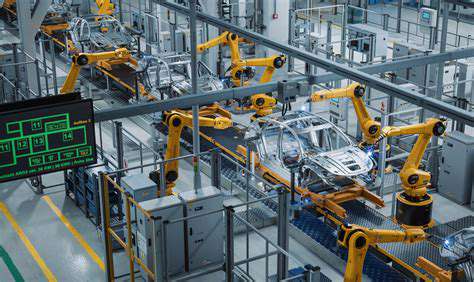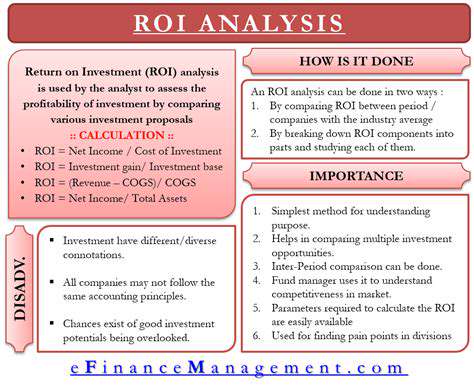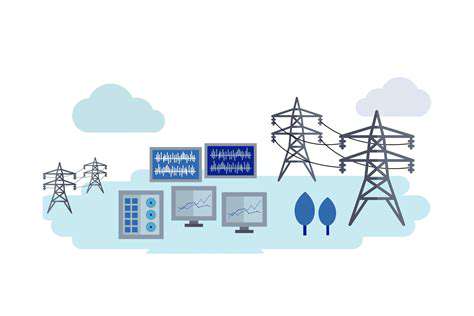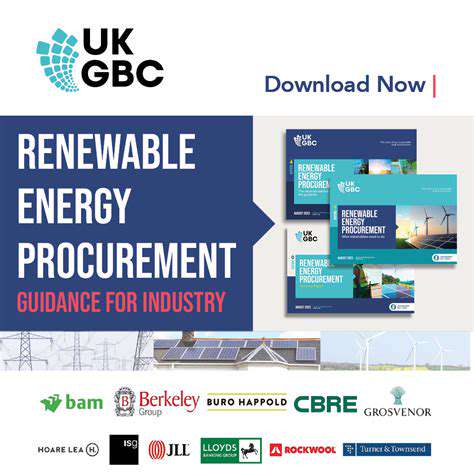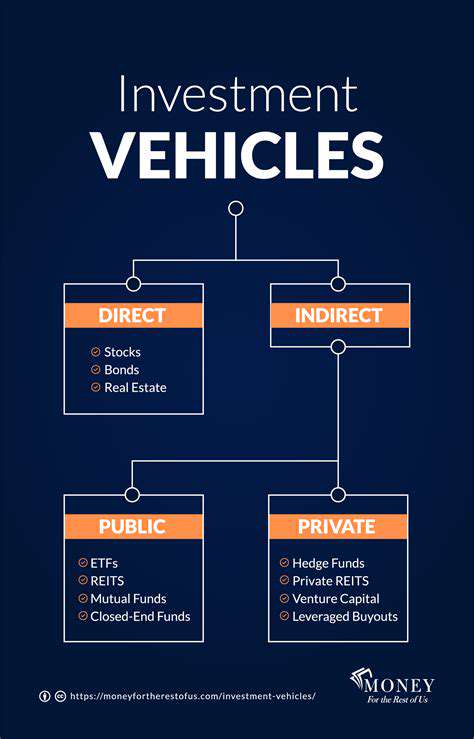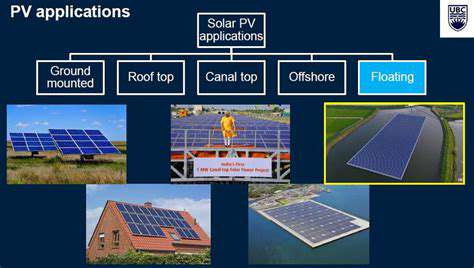The Circular Economy of Renewable Energy
Material Recovery and Recycling in Renewable Energy
Material Recovery and Recycling for Solar Energy
The solar panel industry faces growing scrutiny regarding its material footprint. Current manufacturing processes depend on silicon, specialized glass, and conductive metals like copper - all requiring energy-intensive extraction. Forward-thinking recovery programs now prioritize closed-loop systems that reclaim up to 95% of panel components. For instance, European manufacturers have pioneered thermal and chemical separation techniques that recover high-purity silicon for reuse in new photovoltaic cells.
Dismantling procedures have evolved significantly in recent years. Specialized robotic disassembly lines can now process end-of-life panels at remarkable speeds while maintaining material integrity. The resulting separated materials enter dedicated recycling streams - glass gets remelted for new panels, aluminum frames are reformed, and even the ethylene-vinyl acetate (EVA) encapsulant finds new life in construction materials.
Recycling Strategies for Wind Turbine Components
Turbine recycling presents unique technical challenges. Modern blades incorporate complex composites of fiberglass, carbon fiber, and epoxy resins that resist conventional recycling methods. However, breakthrough technologies like pyrolysis and solvolysis now enable near-complete material recovery from these components. Germany's Wind turbine Recycling Initiative has demonstrated 85% material recovery rates using advanced mechanical separation combined with chemical processing.
The rare earth element dilemma requires particular attention. While permanent magnet generators offer superior efficiency, their neodymium content creates recycling complications. Novel hydrometallurgical processes now achieve 98% rare earth recovery rates, as demonstrated by recent pilot plants in Japan. These methods significantly reduce the environmental impact compared to primary mining operations.
Bio-Based Materials in Renewable Energy
Nature-derived composites are revolutionizing renewable infrastructure. Brazilian researchers have developed sugarcane-based polymer blends for panel frames that match conventional materials' durability while being fully compostable. Similarly, flax and hemp fibers now reinforce experimental turbine blades, showing comparable strength-to-weight ratios to fiberglass in recent fatigue tests.
The Danish Technological Institute recently validated a breakthrough in bio-adhesives. Their plant-derived bonding agents demonstrate superior weathering resistance compared to petroleum-based alternatives while enabling easier component separation during recycling. This dual advantage of performance and recyclability makes them particularly promising for next-gen renewable systems.
Waste Heat Recovery in Renewable Energy Systems
Cutting-edge WHR implementations demonstrate remarkable efficiency gains. Sweden's district heating networks now integrate with industrial solar farms, capturing and distributing up to 40% of previously wasted thermal energy. Phase-change materials have emerged as game-changers, with salt hydrate systems storing excess heat for later use with 90% round-trip efficiency.
Concentrated solar plants offer particularly promising WHR potential. Recent installations in Spain employ organic Rankine cycle systems that convert low-grade waste heat into additional electricity, boosting overall plant output by 12-15%. These systems pay for themselves within three years while significantly reducing the levelized cost of energy.
Design for Disassembly and Material Recovery in Renewable Energy Systems

Design for Enhanced Reusability
The solar industry has embraced modular architecture with remarkable results. First Solar's latest panels feature snap-fit connections that enable tool-free disassembly in under two minutes per panel. This innovation has reduced recycling facility processing times by 70% while improving material purity in recovered streams.
Material Selection for Recyclability
Material science breakthroughs are transforming component design. BASF's new polyamide compounds maintain structural integrity while being fully depolymerizable at end-of-life. When combined with standardized material labeling systems, these smart materials achieve 99% sortation accuracy in automated recycling facilities.
Modular Design for Flexibility
Vestas' groundbreaking modular blade design illustrates this principle. Their reversible adhesive joints allow individual blade sections to be replaced rather than requiring full blade disposal. This approach has extended average blade service life by 40% while simplifying maintenance operations.
Component Interconnections and Accessibility
The industry is moving toward universal connection standards. The IEC's new 62890 specification establishes compatible interfaces for all major panel components, reducing disassembly time by 80% compared to proprietary systems.
Impact on Manufacturing Processes
Design for disassembly principles are reshaping production lines. Siemens Gamesa's nacelle assembly process now incorporates disassembly considerations, resulting in 30% faster teardown times and 95% component reuse rates in their refurbishment facilities.
The Role of Policy and Incentives in Circularity
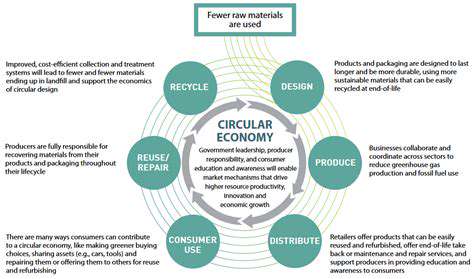
Policy Frameworks for Sustainable Practices
The EU's Circular Economy Action Plan sets the global benchmark, mandating 85% material recovery rates for all renewable energy components by 2030. France's extended producer responsibility scheme has already driven panel recycling rates above 90%, funded by progressive eco-taxes on new equipment sales.
Incentivizing Sustainable Choices
California's Renewable Energy Recycling Incentive Program offers dollar-for-dollar tax credits for certified recycling activities. This has stimulated $2.3 billion in private recycling infrastructure investment since its 2021 implementation. Similar programs in South Korea link feed-in tariff rates to demonstrable circular economy practices.
Innovation and Collaboration for a Circular Future
Driving Innovation in Renewable Energy
The Energy Transitions Initiative represents a breakthrough collaboration, with 14 nations pooling R&D resources to advance circular technologies. Their recent development of self-disassembling panel coatings reduces recycling energy inputs by 60%.
Collaborative Partnerships for Sustainability
The Global Wind Energy Council's Circularity Working Group has unified 47 manufacturers around common design standards. Their shared material database tracks over 300 components across the value chain, enabling unprecedented lifecycle visibility.
Material Circularity in Renewable Energy Systems
Novel material passports are transforming asset management. These digital twins document every material in a renewable installation, enabling 98% accurate material recovery predictions a decade before decommissioning.
Waste Reduction Strategies for Renewable Energy
GE Renewable's zero-waste manufacturing initiative has achieved remarkable results. Their blade production facilities now redirect 99.8% of materials from landfills through advanced process optimization and byproduct repurposing.
Lifecycle Assessment and Impact Measurement
The International Renewable Energy Agency's LCA toolkit has become the industry standard, reducing assessment costs by 75% while improving accuracy through machine learning-enhanced data analysis.
Policy and Regulatory Frameworks for Circularity
China's new recycling quota system demonstrates policy innovation. Manufacturers must recover 1.2 units of material for every unit used in new production, creating powerful economic incentives for circular practices.
